
How to Use MAX6675: Examples, Pinouts, and Specs
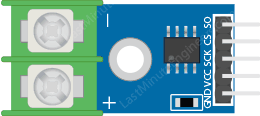
 Design with MAX6675 in Cirkit Designer
Design with MAX6675 in Cirkit DesignerIntroduction
The MAX6675 is a digital temperature sensor designed to interface with K-type thermocouples, providing accurate temperature readings in a range of 0°C to 1024°C. It converts the thermocouple's analog signal into a 12-bit digital value and communicates with microcontrollers via the SPI (Serial Peripheral Interface) protocol. The MAX6675 is widely used in applications requiring precise temperature monitoring, such as industrial automation, HVAC systems, and laboratory equipment.
Explore Projects Built with MAX6675
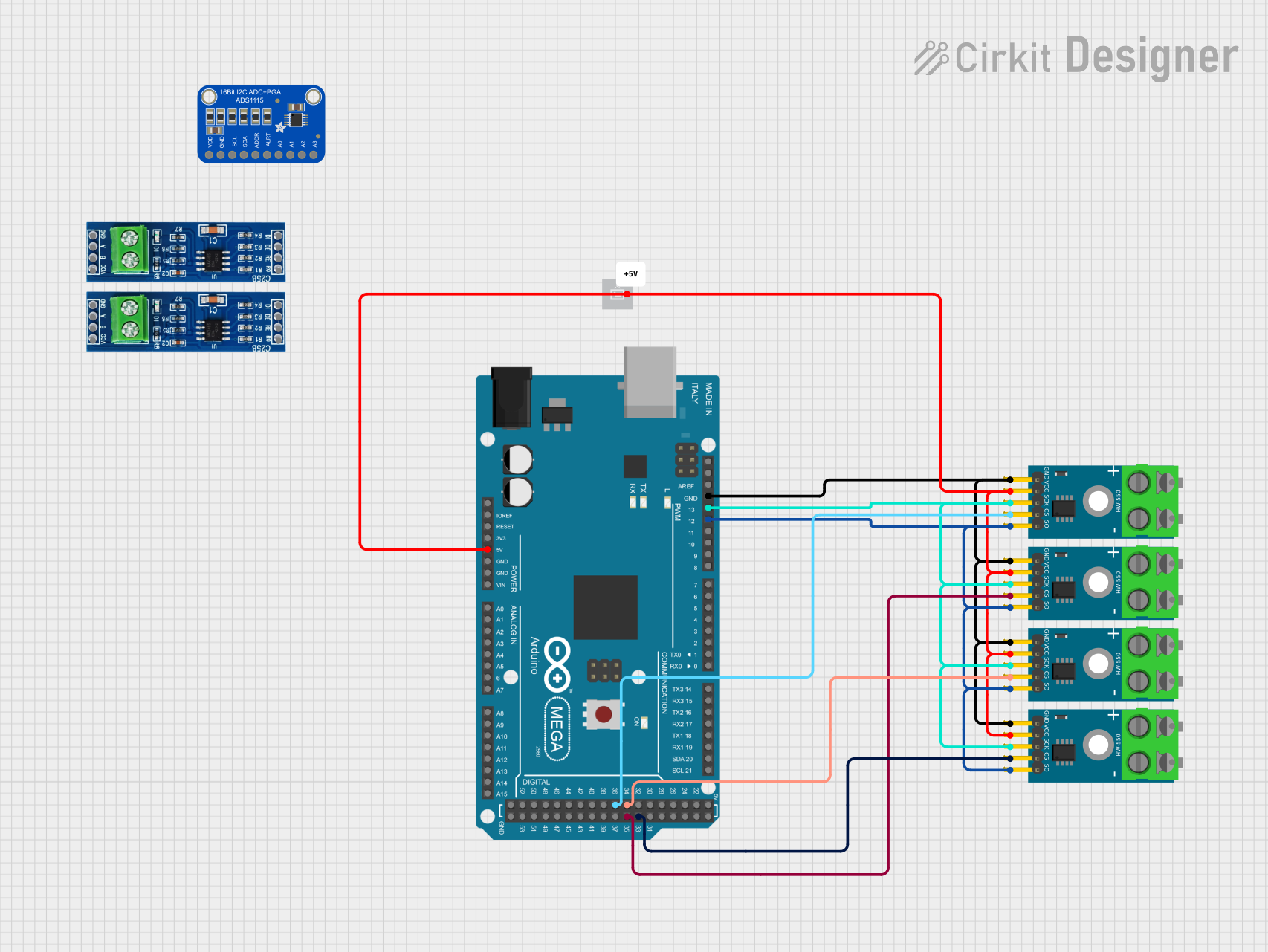
 Open Project in Cirkit Designer
Open Project in Cirkit Designer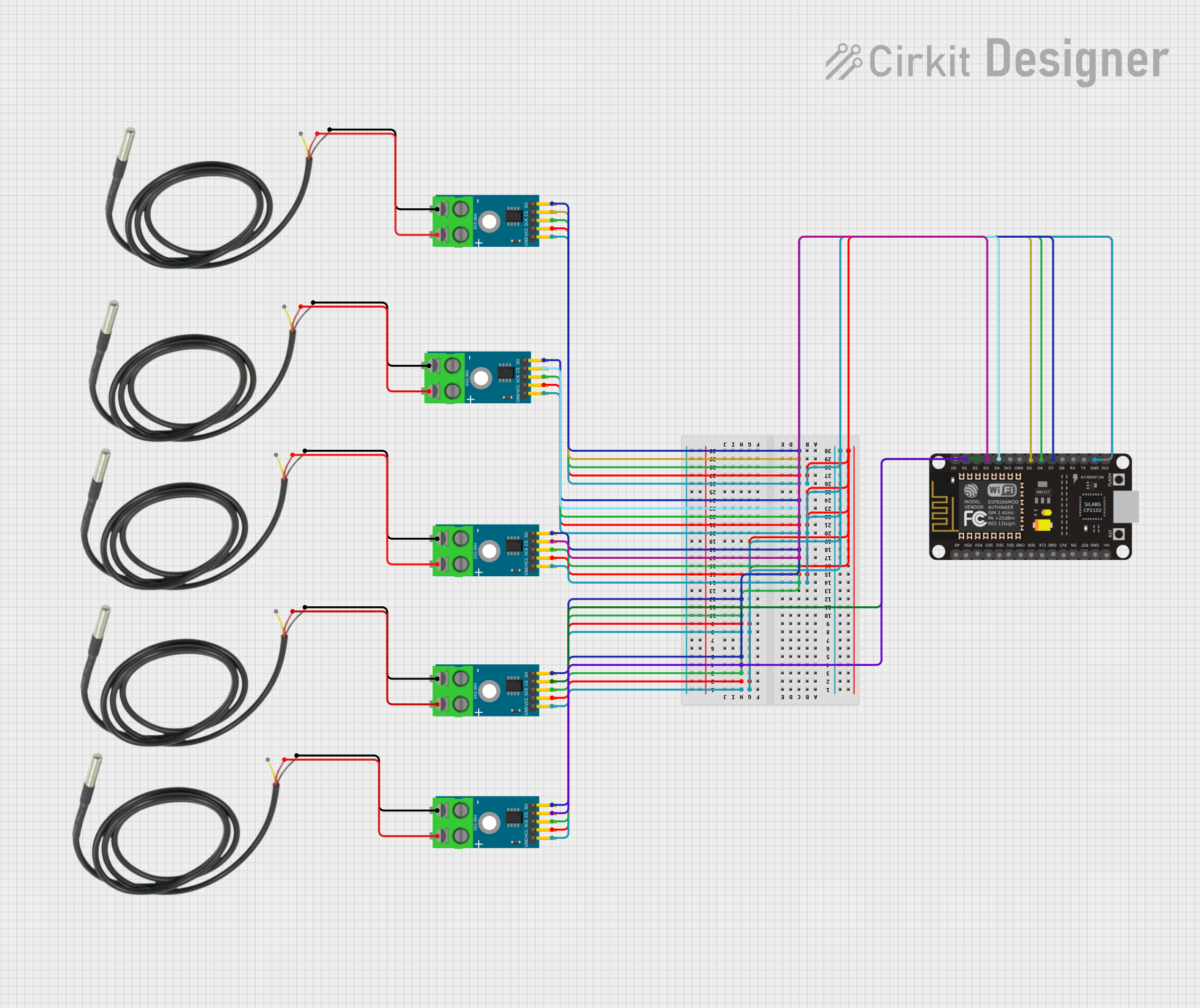
 Open Project in Cirkit Designer
Open Project in Cirkit Designer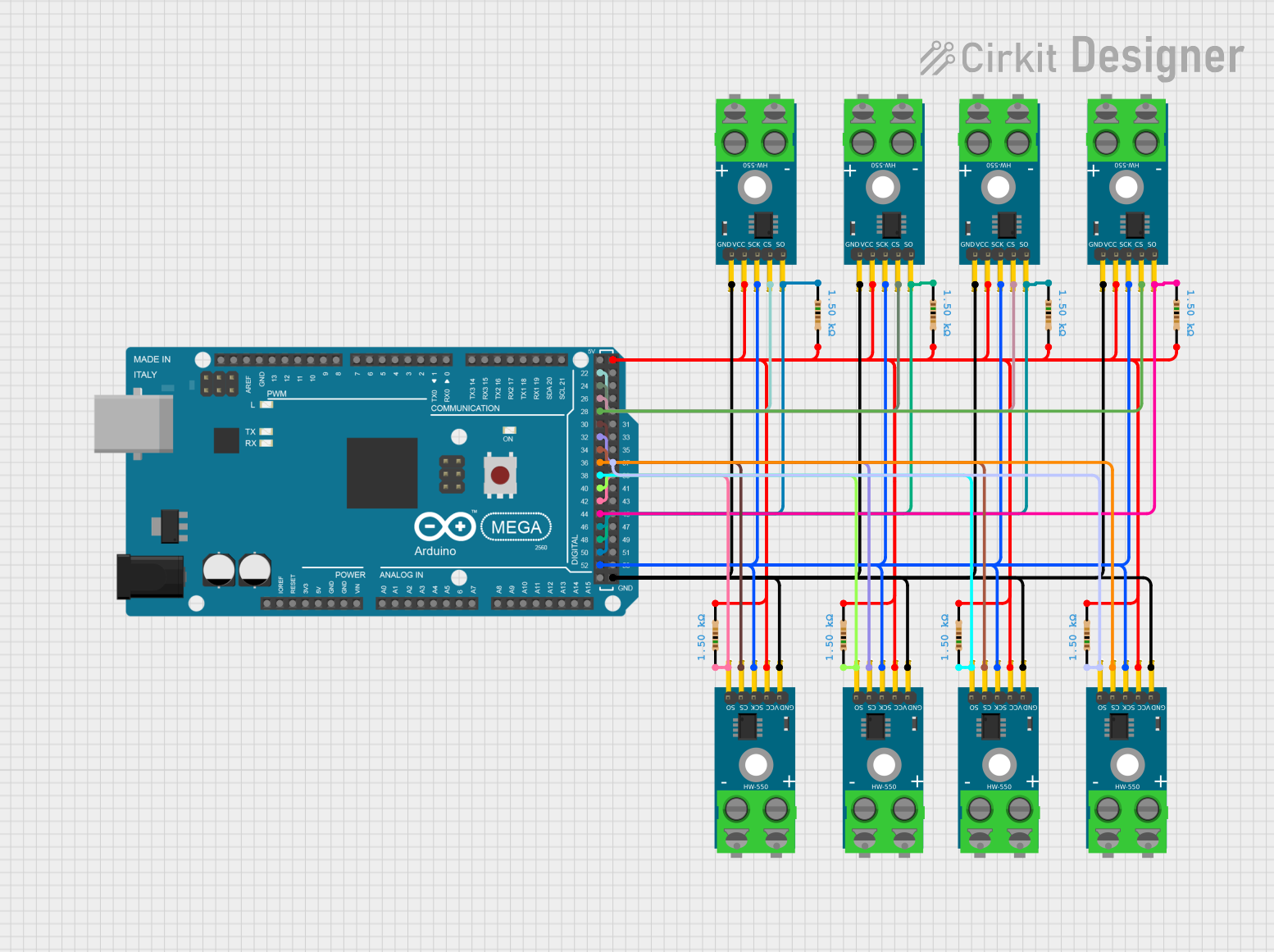
 Open Project in Cirkit Designer
Open Project in Cirkit Designer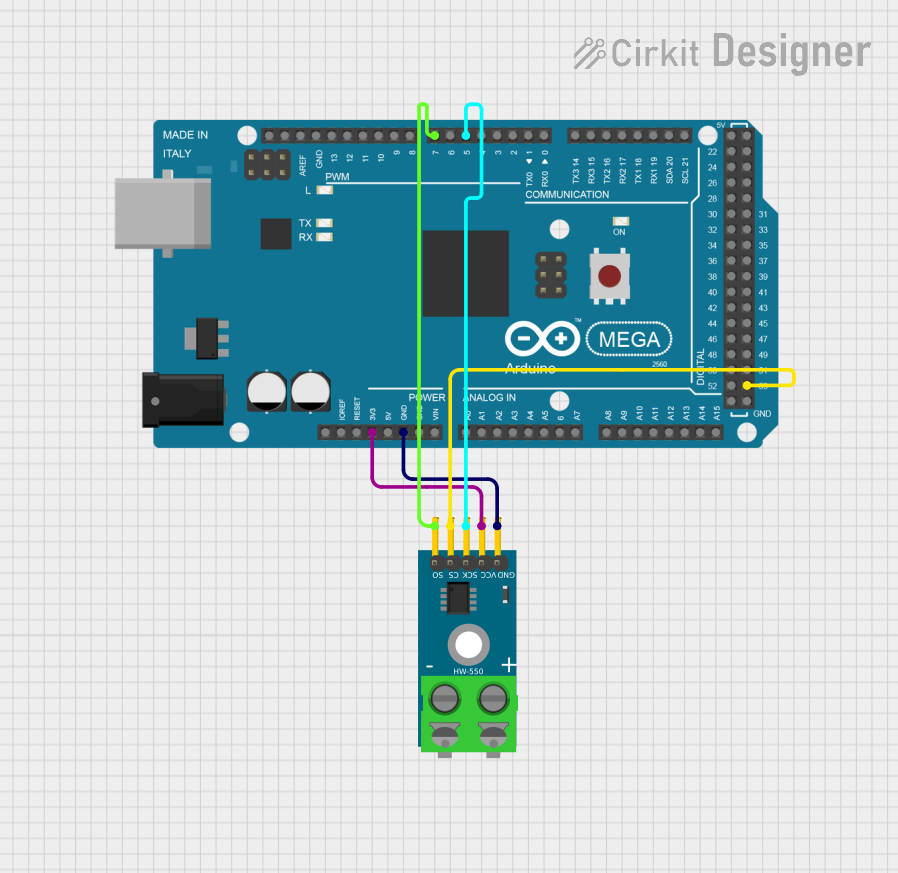
 Open Project in Cirkit Designer
Open Project in Cirkit DesignerExplore Projects Built with MAX6675

 Open Project in Cirkit Designer
Open Project in Cirkit Designer
 Open Project in Cirkit Designer
Open Project in Cirkit Designer
 Open Project in Cirkit Designer
Open Project in Cirkit Designer
 Open Project in Cirkit Designer
Open Project in Cirkit DesignerTechnical Specifications
- Temperature Range: 0°C to 1024°C
- Resolution: 0.25°C
- Accuracy: ±2°C (typical)
- Supply Voltage: 3.0V to 5.5V
- Current Consumption: 1.5mA (typical)
- Communication Protocol: SPI (3-wire interface)
- Thermocouple Compatibility: K-type
- Output Format: 12-bit digital data
- Cold-Junction Compensation: Built-in
Pin Configuration and Descriptions
The MAX6675 is typically available in an 8-pin SOIC package. Below is the pinout and description:
| Pin Number | Pin Name | Description |
|---|---|---|
| 1 | SO | Serial Data Output (SPI data line) |
| 2 | CS | Chip Select (active low, enables communication) |
| 3 | SCK | Serial Clock Input (SPI clock line) |
| 4 | GND | Ground (0V reference) |
| 5 | NC | No Connection |
| 6 | NC | No Connection |
| 7 | VCC | Power Supply (3.0V to 5.5V) |
| 8 | T- | Negative terminal for the thermocouple |
Usage Instructions
How to Use the MAX6675 in a Circuit
- Power Supply: Connect the VCC pin to a 3.3V or 5V power source and the GND pin to the ground.
- Thermocouple Connection: Attach the K-type thermocouple to the T+ and T- pins. Ensure proper polarity (T+ is positive, T- is negative).
- SPI Communication:
- Connect the
SOpin to the microcontroller's MISO (Master In Slave Out) pin. - Connect the
CSpin to a GPIO pin on the microcontroller for chip select. - Connect the
SCKpin to the microcontroller's SPI clock pin.
- Connect the
- Pull-Up Resistor: Use a pull-up resistor on the
CSline if required by your microcontroller. - Cold-Junction Compensation: The MAX6675 automatically compensates for cold-junction temperature, so no additional circuitry is needed.
Arduino UNO Example Code
Below is an example of how to interface the MAX6675 with an Arduino UNO:
#include <SPI.h>
// Define MAX6675 connections
const int CS_PIN = 10; // Chip Select pin
const int SCK_PIN = 13; // Serial Clock pin
const int SO_PIN = 12; // Serial Data Output pin
void setup() {
Serial.begin(9600); // Initialize serial communication
pinMode(CS_PIN, OUTPUT); // Set CS pin as output
digitalWrite(CS_PIN, HIGH); // Set CS pin high (inactive)
SPI.begin(); // Initialize SPI communication
}
float readTemperature() {
uint16_t value = 0;
// Start communication with MAX6675
digitalWrite(CS_PIN, LOW); // Activate chip select
delay(1);
// Read 16 bits of data from MAX6675
value = SPI.transfer(0x00) << 8; // Read high byte
value |= SPI.transfer(0x00); // Read low byte
digitalWrite(CS_PIN, HIGH); // Deactivate chip select
// Check for thermocouple connection error
if (value & 0x0004) {
return NAN; // Return NaN if no thermocouple is connected
}
// Extract temperature data (bits 3-15) and convert to Celsius
value >>= 3; // Shift out unused bits
return value * 0.25; // Multiply by resolution (0.25°C per bit)
}
void loop() {
float temperature = readTemperature(); // Read temperature
if (isnan(temperature)) {
Serial.println("Thermocouple not connected!");
} else {
Serial.print("Temperature: ");
Serial.print(temperature);
Serial.println(" °C");
}
delay(1000); // Wait 1 second before next reading
}
Important Considerations and Best Practices
- Ensure the thermocouple is properly connected to the T+ and T- pins. Reversed polarity will result in incorrect readings.
- Avoid long thermocouple wires or noisy environments, as they can introduce errors.
- Use decoupling capacitors (e.g., 0.1µF) near the VCC pin to stabilize the power supply.
- The MAX6675 is designed for K-type thermocouples only. Using other types will result in inaccurate readings.
Troubleshooting and FAQs
Common Issues and Solutions
No Temperature Reading (NaN Output):
- Ensure the thermocouple is securely connected to the T+ and T- pins.
- Check for broken or damaged thermocouple wires.
- Verify that the
CS,SCK, andSOpins are correctly connected to the microcontroller.
Incorrect Temperature Readings:
- Confirm that the thermocouple is a K-type.
- Check for electrical noise or interference in the circuit.
- Ensure the power supply voltage is within the specified range (3.0V to 5.5V).
SPI Communication Issues:
- Verify the SPI clock speed. The MAX6675 supports clock speeds up to 4.3MHz.
- Ensure the
CSpin is toggled correctly (active low) during communication.
FAQs
Q: Can I use the MAX6675 with a 3.3V microcontroller?
A: Yes, the MAX6675 operates with a supply voltage of 3.0V to 5.5V, making it compatible with both 3.3V and 5V systems.
Q: What happens if the thermocouple is disconnected?
A: The MAX6675 sets the fault bit (D2) in the output data, and the temperature reading will be invalid (NaN in the example code).
Q: Can I use a different type of thermocouple with the MAX6675?
A: No, the MAX6675 is specifically designed for K-type thermocouples. Using other types will result in inaccurate readings.